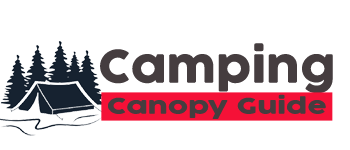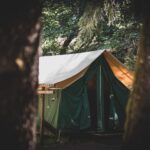
Camping Tent buying guide
A tent is a significant purchase. There are various camping tent choices, they can be pricey, and you don’t want to end up camping with the wrong supplies. The excellent thing is that we are here to make this procedure as simple as we can. We’ll go over the main characteristics of camping tents, explain why they exist, and help you decide whether or not they’re important.
Tent Capacity
Choose a tent model based on the size of your crew and if you’ll want extra room for goods, pets, or additional pals. But, keep in mind that there is no industry standard that specifies the size of a tent for each individual.
Going bigger is the best course of action when you are camping less than 30 feet from your car because load and packed size are not a concern. And let’s face it, chances are you will simply reschedule if the climate is going to be poor. Additionally, we are all aware that some creature amenities will be included. If stuff fits in your car, you may take it camping with you. This includes a coolers, armchair, blankets, barbecue, rope tow, and fishing equipment.
It’s crucial to remember that most tents are constrained at their declared capacities. Therefore, if you want enough space to spread out your baseball card collection, play arcade games, exercise daily, etc., we recommend either choosing a tent that can accommodate more people or looking into convenient features such as the doorway size.
Two people can fit side by side in a two-person tent, but only if you don’t care being up close to one another. For casual friends, they could be a touch too close for comfort, but they’re perfect for couples. Although some businesses produce 2.5-person tents, which are perfect for couples who desire more space, three-person tents are great for two people if you need a little additional space.
Tent Types
There are two sorts of tents: freestanding tents and stake-in tents. The majority of camping tents will need to be staked in because they are lighter because they use less metal frame parts. Unfortunately, because they can’t support themselves, they aren’t the best option for rough terrain where it’s difficult to set up stakes.
Tents Season
3-Season Tents – Compact shelters called “3-season tents” are made for the comparatively moderate seasons of spring, summer, and fall. They frequently have large mesh panels to improve ventilation. Although 3-season tents may endure light rain, they are not the greatest option for prolonged exposure to powerful storms, strong winds, or snow drifts.
4-Season Tents – Compared to 3-season tents, they use more poles and heavier fabrics. The flat roof areas where snow can accumulate are eliminated by their circular dome forms. They only include a few mesh panels and floor-level rainflies. They may feel hot and stuffy in mild weather as a result of the airflow being hampered. A 4-season tent, however, offers a secure haven of shelter when ominous winds start to howl.
Double-Wall – When you picture a camping tent, this is typically the kind that comes to mind. These are made up of an inner tent frame that is supported by two or more poles and features all the mesh windows, doors, and zippers as well as a rain fly that covers the main body of the tent to block out wind and rain.
Single-Wall – Mountaineering often makes use of single-wall tents. Even though they are designed for the same function, they are generally lighter and smaller than a tough double-wall tent. This indicates that the tent body is entirely waterproof.
Tent Features
Floor Length – Consider a tent with a floor length of 90 inches rather than the more common 84-88 inches if you are taller than 6 feet or prefer extra space.
Durability – To cut costs, some tent manufacturers economise on weaving and materials. If you camp frequently and are familiar with the area where you will be using the equipment, this measure is one that you should consider when making your final purchase. It might not matter in warmer regions or for sparing users. Things to consider are the materials used for the tent, fly, poles, and stakes. Above all, bad poles are the most damaging to a camping trip. consider the return policy of who you are purchasing from
Ease of Use – It’s also acceptable to choose not to read the directions or argue with your partner in order to set up a tent. Therefore, it makes sense that a tent that is simpler to use will be utilized more frequently. Your trip will get off to a better start if the tent is simpler to pitch, as it will be one of the first things you put up.
Ventilation – This is another important thing to think about. The quantity of ventilation the tent permits can have a significant impact on the ambient temperature if you normally camp in warmer locations. Fine mesh windows, doors, and strategically placed vents all work together to help you just perspire when cooking.
Poles and Stakes – These must be strong and of excellent quality. How much thrashing your tent can withstand will depend a lot on the structure of your poles. Strong wind gusts will be more easily withstood by poles that cross and tension than by ones that do not. Additionally, many tents today use a hub system. These are frequently durable plastic components attached to numerous pole strings.
Rain Fly – Your tent comes with or has a fly built in. You won’t want to be without one if the rain starts to fall. A wider footprint than the tent itself should be created by the fly, and you should pay attention to the angles and awnings it generates. Instead of creating pools or smashing your walls about, a more sloping, aerodynamic design will encourage water and wind to glide off the edges more easily.
Tent Doors – Consider the number of doors you’ll need, as well as their design and placement, while selecting your tent. When camping with your family, having numerous doors allows you to avoid bumping into one another when going to the bathroom at odd hours. In this setting, tents in the cabin style often excel. Take notice of how simple or noisy it is to open and close the doors. The doors’ zippers hold up better against hooking and breaking than others.





